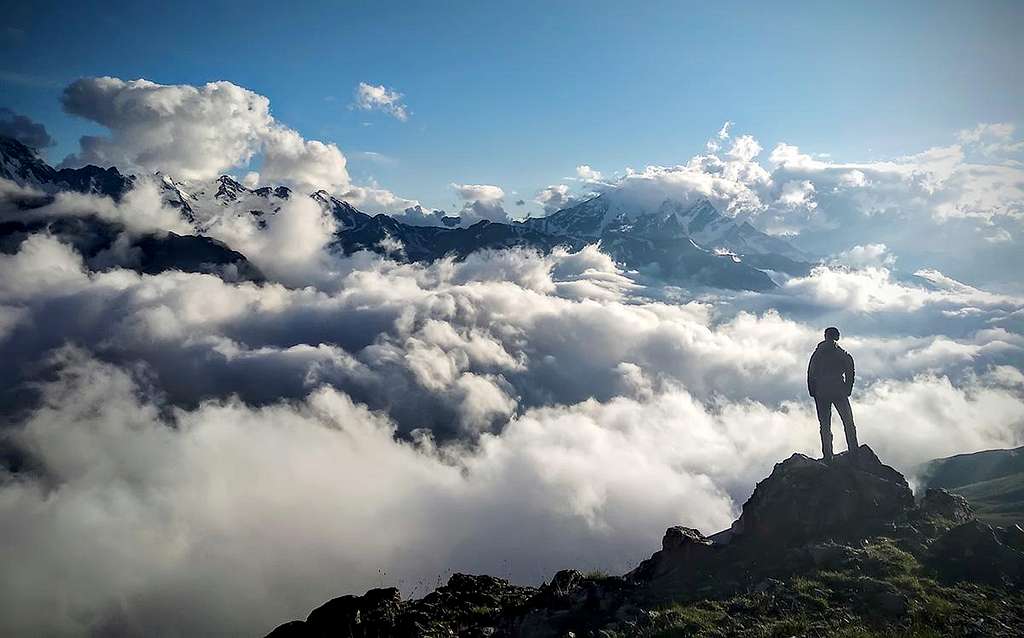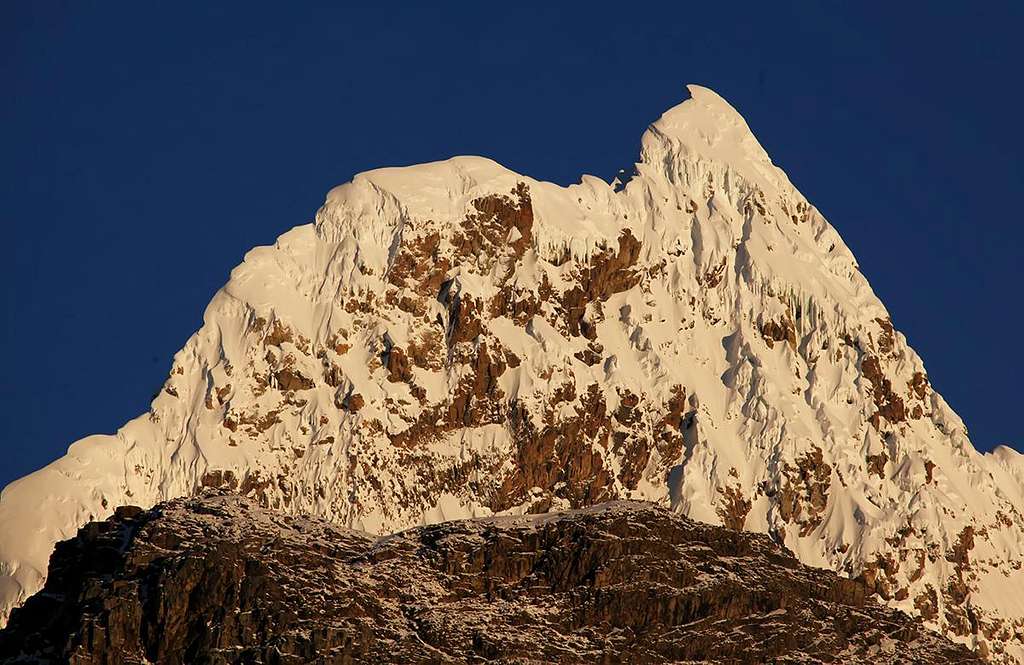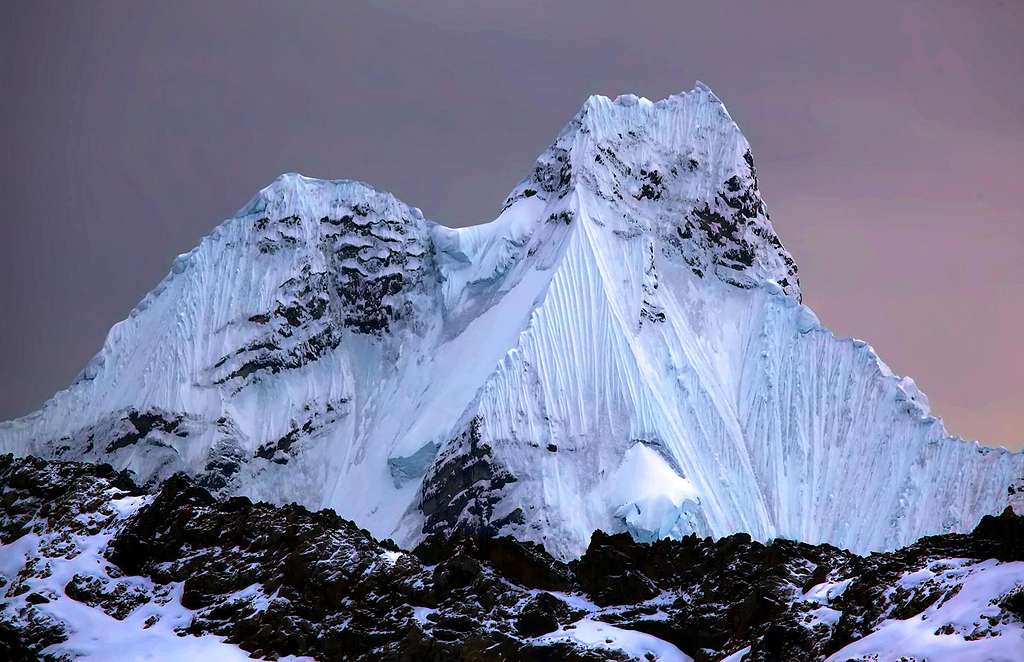Safety illusions in the mountains

Of course, mountaineering is a dangerous activity, in that thesis I will unlikely go beyond the banal axioms. However, there is an opinion about the relative safety of mountaineering in the case of compliance with a certain rules - I would prefer to deal with this in more detail. There is a lot of illusions and delusions, especially among soft ass professionals and television lovers of mountain sports. I consciously will not use the term "extreme sports" here, since in my deep conviction, mountaineering refers to them only in its pathological forms. A normal person, guided by common sense and sense of self-protection, will never cross the line of "extreme" as in alpinism, or in anything else.
In this article, I want to dispel the widespread myth that using a rope while climbing a mountain route always ensures the safety of the climbers.

I am often asked why on the commercial ascents sometimes I do not use a rope?
I'll start to answer the question a little from afar and list the most reliable safety factors in mountaineering, and then I go directly to the question about the rope.
So, the unconditional factors that increase the safety of people on mountain trekking and climbing routes are:
- Presence of stable channels of communication with rescue services, police and ambulance (cellular, satellite, radio channel). Ideally, all members of the group should have access to these channels, and communication channels should be duplicated.
- Awareness of the rescue services about the route of the group, the timing of getting in and out of the route.
Probably, you understood the idea - you should never count on the possibility of self-rescue in case of an accident in the mountains. This is the most common misconception and the cause of many troubles in the mountains - an over confidence in the abilities to resolve the emerging problems. The availability of various devices for belay and protection - a rope in case of a sudden fall, a GPS navigator in case of loss of orientation, a first aid kit in case of illness - all this is necessary, but the effectiveness of all these elements is rather low, especially if participants do not have special tactical and technical training, which, as a rule, only very few professionals possess. So, help from outside will always be 1000% more efficient than any self-rescue operations.

Now let's pass to the declared subject about a rope. The foregoing conception does not in any way concern difficult technical routes, and in no way is an appeal to perform solo ascents without any protection. The use of a rope is an indispensable element of safety for climbing, where there is a high probability of fall - there is nothing to argue about this and the classic safety position in mountaineering is fully applicable.
But as soon as we move to the routes of basic and medium complexity - everything becomes not so obvious. Using a rope can be not only an ineffective measure, but even attract additional risks, about existence of which not many climbers guess. A few examples follow and comments to them as well. Ascent to Elbrus, quite gently ice slope, open hard ice. Moving of a roped group without organization of belay points is an acceptable tactical solution, according to the serious length of the route and the very unstable weather conditions. However, in case of fall of one participant, the whole group can be effected, mutual fall is highly possible, especially if the roped group is rather light - 2-3-4 persons. The result of using the rope in that case - "one fell - all flew." They fell down, got seriously injured and there was no one to help. All died. In this case, the rope helped only to the rescuers - all the dead corpses were connected and there is no need to look for them separately. Another example. Ushba glacier, crevasse, collapsed snow bridge and a roped pair of climbers sits deep in an icy hole with broken legs. Not possible to get out, no radio connection nor any chance to call for help. Both died from hypothermia. Most likely, they are not even found, as the rescuers are not able to search all the crevasses of the glacier. The rope did not help in that case neither, because in roped pair, the mutual fall is the most probable result in case of sudden impact - even a small pull on the rope in case of equal weight of the participants breaks down the second climber and the chances to self-arrest are very low.

By the way, we'll talk separately about the dangers of an independent climbing of two roped people, it's an interesting topic for the next article. The third example happen during the ascent of Mont Blanc, the moving of the roped group along the steep scree slope (couloir) - the progressing of the group was slowed down due to ineffective interaction of the roped participants. Result: too much time spent in site exposed to the rockfall, the group been hit with rocks, the participants are injured, one died, rescuers arrived in half an hour and took everyone to the hospital - not the best ending of the climb. No comments needed. And the last example. Khan Tengri, fabulous 7-thousender, the traverse of the avalanche slope (crevassed glacier) group moves roped - as it is indicated with most of the safety rules. But breaking down of a small wet avalanche right to the middle climber on a rope. The result is that the whole group is trapped in the avalanche, the participants, entangled in the rope, could not dig themselves out and die at a shallow depth under the snow before the aid arrives. Without a rope, they could easily run down the slope and, after the avalanche got stop, quickly rescue those who still were under snow.

The conclusion from the above written should done with caution. The use of the rope must be justified and tactically weighed, not always the solution is so obvious and for its correct adoption according to the situation, climbing experience is required. Standard solutions (such as the mandatory use of a rope at all times), in some cases, do more harm than good. While training in mountaineering and passing alpine climbing courses one should pay more attention to the tactical solutions rather than to the technical ones. For example, to spend a week trying to train a novice climber how to use a system of pulleys to pull a partner out of the crevasse is a matter of course interesting, but as well rather meaningless, and perhaps even dangerous. Since, in the crevasse, most likely this person will be together with his partner, being confident that he has all the necessary knowledge about climbing knots and pulling systems.
External Links
More articles on the mountain climbing from MSC AlexClimb

